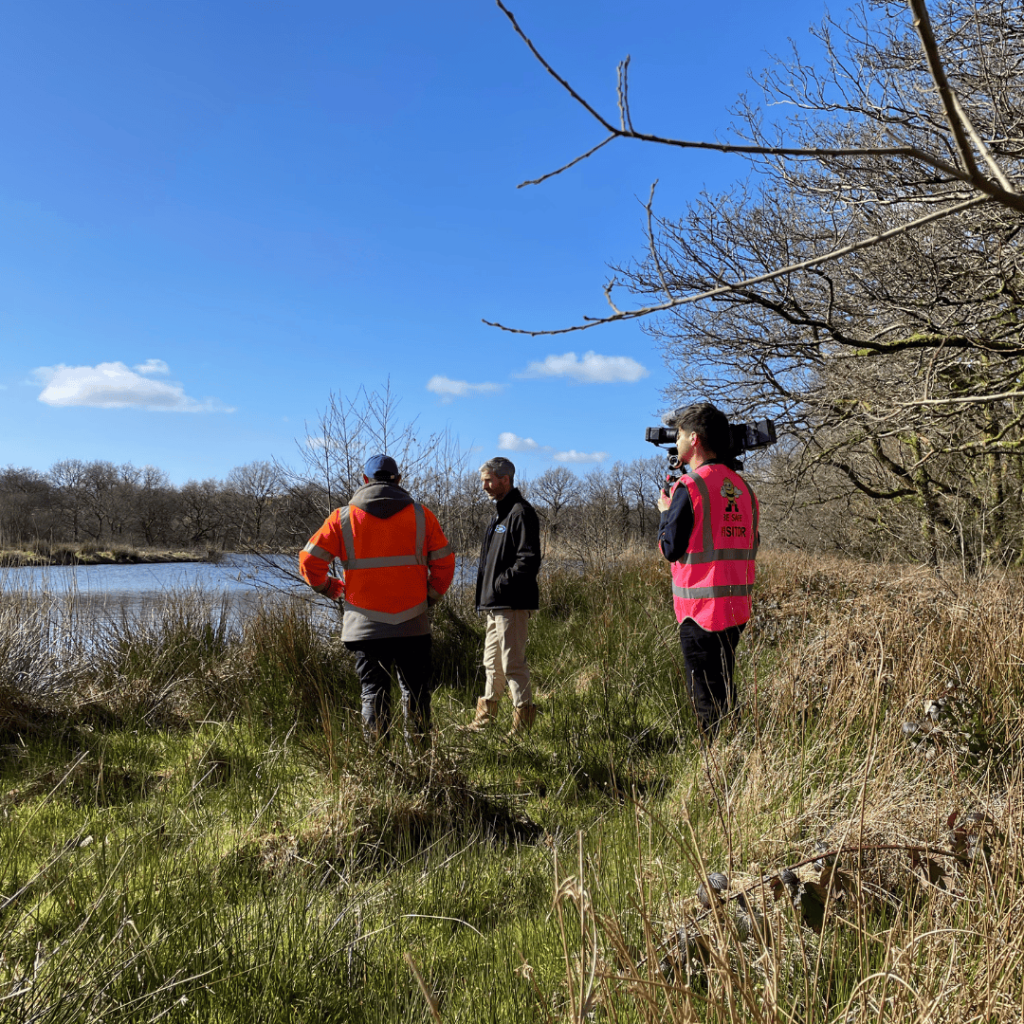
Earth Day is often a moment for reflection, but it’s also a prompt for action. Sustainability isn’t a seasonal trend or a one off event. It’s a long term commitment, and circularity is central to how we at CWM approach it.
For decades, our systems have followed a linear model: take, make, use, and discard. On the surface, it seemed efficient. But the environmental cost tells a different story. Landfills are filling up. Resources are running low. The climate crisis is accelerating. To move forward, we need to rethink the way we design, use, and recover materials.
That’s where the circular economy comes in. And at CWM, it’s more than an idea. It shapes the way we work, plan, and serve our communities.
Rethinking Waste
Circularity begins with a simple shift in mindset. Instead of asking how to manage waste after it’s created, we ask how to prevent it in the first place. Every product, material, and process should be considered in terms of its full life cycle.
Can it be reused? Can it be repaired or repurposed? Can it return safely to nature?
This kind of thinking leads to practical innovation. It drives smarter systems and more sustainable choices at every level, from individual households to national infrastructure. At our rescue village – Canolfan Eto, we take this initiative every day. We repair 100s of items every week and give them a second life. Our team of technicians work tirelessly on new concepts and ideas with he aim to keep items in use for longer.
Why Circularity Matters Now
The pressure on our planet has never been greater, which is why circular thinking is relevant and essential.
It reduces waste before it happens
By focusing on design and use rather than disposal, we can eliminate unnecessary materials and keep valuable resources circulating for longer. Recycling should only be considered when reuse is not an option.
It supports innovation
Circular systems invite us to do things differently. From modular product design to creative reuse and recycling initiatives, businesses and communities can benefit from new, regenerative models. The manufacturing world needs to shift regarding product longevity. We all feel the pressure to get the newest phone or piece of tech every year. Companies spend millions on promoting their latest model, but those millions should be put into product longevity. The current problem with the globalised economy is that it’s inherently profit driven. Every year, companies must maximise their profits and exceed last year’s records; shareholders rely on short product life, and something needs to change. The question is, how can we incentivise this? Take modular product design. In a circular system, products aren’t designed to be thrown away, they’re made to be repaired, upgraded, or repurposed. Think of a phone that you can update by swapping out its processor, rather than replacing the entire device. Or a pair of shoes with replaceable soles, built to last not one season, but many.
These are no longer fringe ideas. They’re smart business strategies in a world that is awakening to the limits of extractive, waste heavy practices.
But the reality is, we’re still working against a system that rewards the opposite. The pressure to constantly innovate is too often interpreted as a race to release new models, not better ones. The electronics industry is a prime example. Consumers are nudged, if not outright pressured, to upgrade their devices annually, even when their current ones work just fine. Marketing cycles are short. Software updates are designed to phase out. Product lifespan is reduced in favour of short-term gains.
Behind this lies a deeper issue. The global economy, as it stands, is built to maximise profit year after year. Public companies are expected to grow continuously. Shareholders demand returns. And one of the most reliable ways to do that is through planned obsolescence products that break, degrade, or go out of style just in time for the next sales quarter.
It’s an unsustainable cycle, and circularity forces us to confront it.
So, how do we change the incentives?
That’s the question the circular economy is beginning to answer.
It empowers people and communities.
When individuals have access to repair cafes, reuse hubs, and composting services, they become active participants in sustainability. Local engagement leads to real impact.
It helps tackle climate change
Circular systems reduce the need for raw material extraction, limit emissions from manufacturing, and promote low-carbon alternatives. This is a decisive step towards meeting global climate targets.
One of the most urgent reasons to embrace the circular economy is its potential to help slow and ultimately reverse the effects of climate change. While much of the focus on climate solutions tends to fall on renewable energy and electric vehicles, the way we use materials plays an equally significant role in reducing emissions, and it’s often overlooked.
Circular systems address climate change by tackling the root causes of waste and overconsumption. They limit the need for raw material extraction, reduce emissions from manufacturing and transport, and promote alternatives that regenerate rather than deplete.
In a linear economy, products are designed with a single lifecycle. Resources are extracted, processed, turned into goods, and eventually discarded. Each step in that chain is carbon intensive. Mining for raw materials, refining them, transporting them across global supply chains, and then incinerating or landfilling the result, none of it is efficient, and all of it contributes to greenhouse gas emissions.
Circular systems break this cycle by designing products and services that use fewer virgin materials and stay in circulation for longer. Whether through repair, reuse, remanufacturing, or composting, the carbon footprint of every item is reduced when we extend its life and avoid unnecessary extraction or production.
The Ellen MacArthur Foundation estimates that over 45% of global greenhouse gas emissions come from the way we produce and use products and food. That’s nearly half the problem, and circularity offers direct ways to address it.
But it goes beyond emissions.
Circular systems also support climate resilience. By localising supply chains and reducing reliance on finite resources, they help communities and economies adapt to changing conditions. When materials are recovered and reused locally, they reduce exposure to volatile global markets and ensure that critical goods remain available, even during periods of disruption.
For example, composting organic waste reduces methane emissions from landfills and creates nutrient rich soil that can improve land health and carbon sequestration in agriculture. Reuse hubs and repair centres don’t just divert waste. They build skills, create local jobs, and reduce demand for carbon intensive manufacturing.
And let’s not forget the indirect impact. By encouraging individuals and businesses to think differently about value and consumption, circular approaches help foster a mindset of stewardship and sustainability. This cultural shift is essential if we’re to make the deep, lasting changes needed to meet the climate goals set by the Paris Agreement and COP commitments.
At CWM Environmental, our approach to circularity is inseparable from our commitment to climate action. Whether it’s through diverting organic waste into compost, supporting community led reuse schemes, or collaborating with local authorities on low-carbon infrastructure, we see climate resilience as a built-in benefit of the work we do every day.
What We’re Doing at CWM
At CWM Environmental, circularity is embedded across our operations. We manage waste differently, not just by processing it, but by recovering value, extending material life, and sharing knowledge.
From local composting and food waste solutions to public reuse initiatives, we create pathways for individuals, businesses, and public organisations to be part of the solution. Education is also a key part of our work, with school programmes and community events that show how small changes can lead to big results.

We work closely with partners across sectors to ensure that circular thinking is integrated into planning, infrastructure, and service delivery.
Looking Ahead
The circular economy is not a niche idea. It’s a blueprint for a better future. A future where waste is designed out, ecosystems are regenerated, and everyone has a role to play in shaping a sustainable society.
On Earth Day, we’re reminded that real change isn’t made through slogans. It’s built over time, through daily decisions, shared responsibility, and long term vision. Circularity gives us the tools to rethink how we live, work, and consume. More importantly, it offers us a way forward that benefits people, planet, and prosperity.
Our latest posts
-
Why Circularity Is the Future of Sustainability
Earth Day is often a moment for reflection, but it’s also a prompt for action. Sustainability isn’t a seasonal trend or a one off event. It’s a long term commitment, and circularity is central to how we at CWM approach it.
-
Hop Into Easter Fun at Canolfan Eto!
Canolfan Eto Reuse Village is hosting a fantastic lineup of FREE Easter activities from 14th–25th April, perfect for families with children up to the age of 13.
-
Half-Term Fun at Canolfan Eto.
Canolfan Eto Reuse Village is hosting an exciting week of free activities from 24th-28th February, designed to teach children hands-on skills that promote repair, reuse, and sustainability!
Our latest posts
-
Why Circularity Is the Future of Sustainability
Earth Day is often a moment for reflection, but it’s also a prompt for action. Sustainability isn’t a seasonal trend or a one off event. It’s a long term commitment, and circularity is central to how we at CWM approach it.
-
Hop Into Easter Fun at Canolfan Eto!
Canolfan Eto Reuse Village is hosting a fantastic lineup of FREE Easter activities from 14th–25th April, perfect for families with children up to the age of 13.
-
Half-Term Fun at Canolfan Eto.
Canolfan Eto Reuse Village is hosting an exciting week of free activities from 24th-28th February, designed to teach children hands-on skills that promote repair, reuse, and sustainability!



